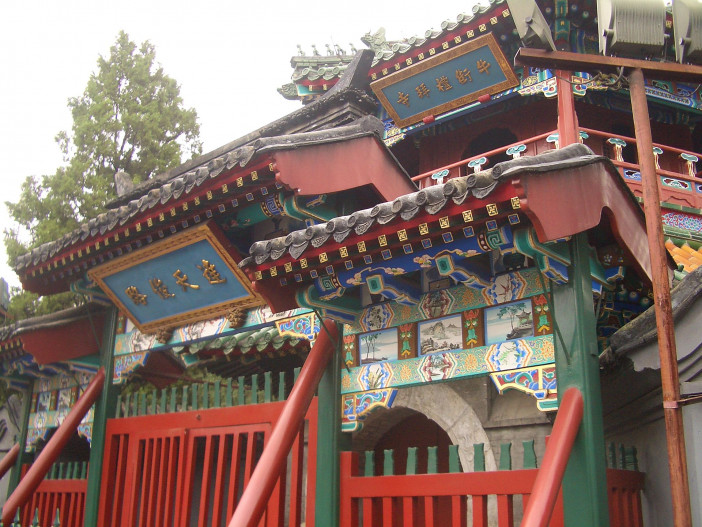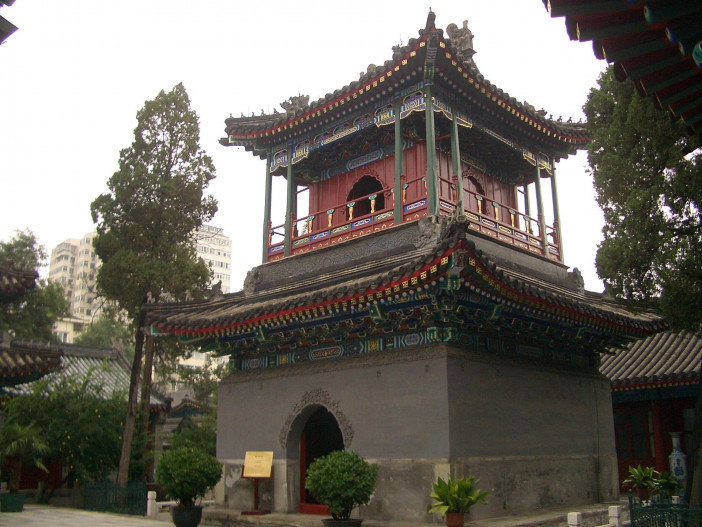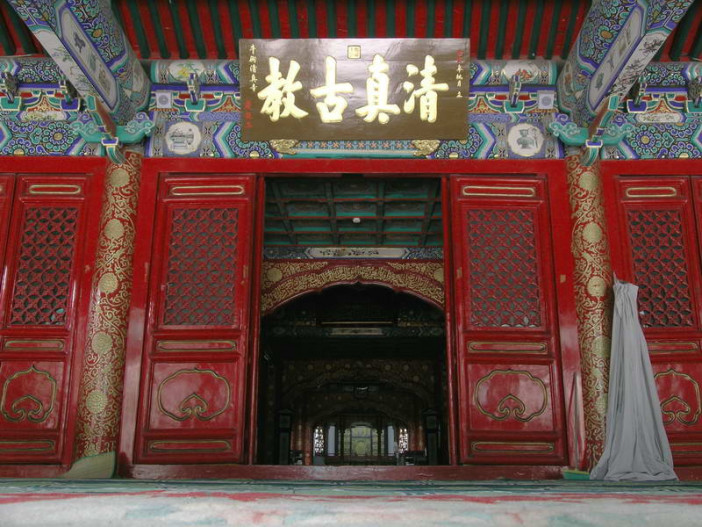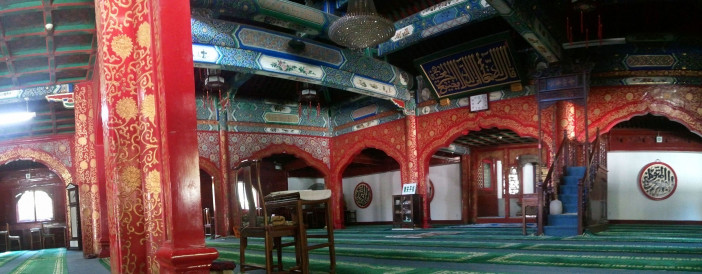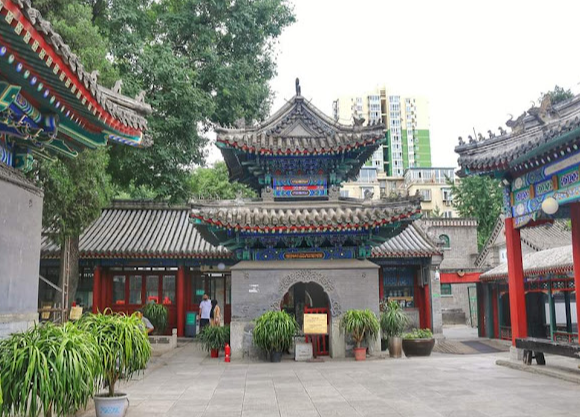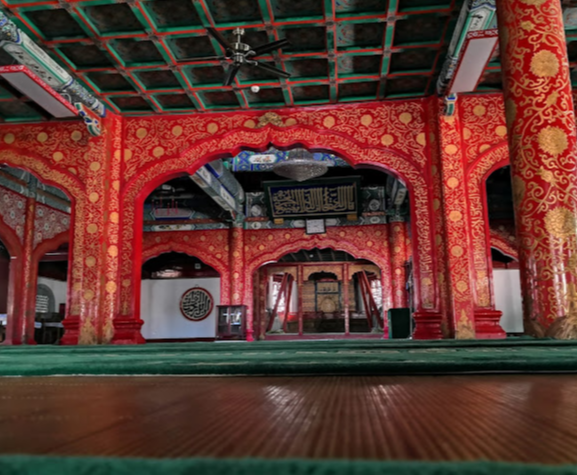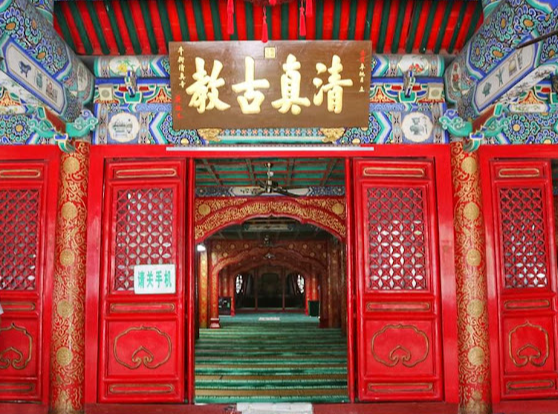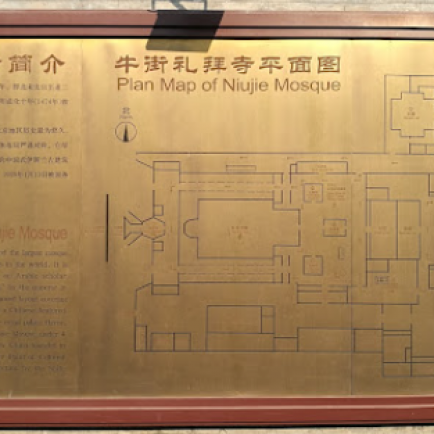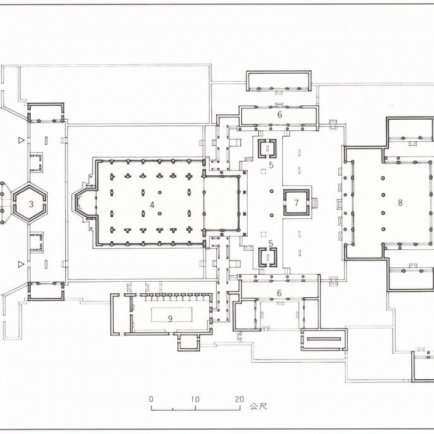Niujie Mosque
History
The Niujie Mosque, the largest of all the mosques in Beijing, was first built in 996 during the Liao Dynasty (916–1125). The local Muslim community constructed the mosque using traditional Chinese architecture, with the exception that it displays Arabic calligraphy in the interior. It was originally designed by Nazaruddin, the son of an imam. After it was destroyed by armies of Genghis Khan in 1215, the mosque was rebuilt in 1443 in the Ming Dynasty.
Muslim eunuchs contributed money in 1496 to repairing Niujie Mosque.
It was significantly expanded in 1696 under the Qing Dynasty. During the Qing Dynasty, the neighbouring markets were known for Halal beef and mutton, even until today, the presence is still quite strong with Muslim grocery stores with Arabic sign along the road. The actual name of the Mosque is Lǐbàisì, which is given by the Chenghua Emperor in 1474, since it is located in Oxen Street (Niú means Oxen and jiē means street) this Mosque is simply called Niujie. It is now one of the major mosques in north China.
The mosque has undergone three renovations since the founding of the People's Republic of China in 1949, respectively in 1955, 1979 and 1996.
As of 2002 the master plan of the renovation of Niujie stated that the mosque will remain at its current location and that a grassy area and large square would be developed around the mosque.
Urban and Architectural
The mosque consists of group of buildings which follow the norms of traditional Chinese architecture. It has two courtyard according to the Siheyuan layout. Facilities include a worship hall, the Wangyue Building, Building for Publicising Etiquette, a lecture hall, the Tablet Pavilion, the Twin Pavilions, and bathrooms. The mosque also houses a library with ancient manuscripts.
Description
The mosque is home to an ancient Quran over 300 years old, tombs of Arabian sages, and an incense burner dating from the Ming dynasty.
Details
Location
Xicheng District, China, 100053
Worshippers
1000
Owners
Ming Dynasty
Year of Build
996
Area
10,000 m2
Drawings
Map
History
The Niujie Mosque, the largest of all the mosques in Beijing, was first built in 996 during the Liao Dynasty (916–1125). The local Muslim community constructed the mosque using traditional Chinese architecture, with the exception that it displays Arabic calligraphy in the interior. It was originally designed by Nazaruddin, the son of an imam. After it was destroyed by armies of Genghis Khan in 1215, the mosque was rebuilt in 1443 in the Ming Dynasty.
Muslim eunuchs contributed money in 1496 to repairing Niujie Mosque.
It was significantly expanded in 1696 under the Qing Dynasty. During the Qing Dynasty, the neighbouring markets were known for Halal beef and mutton, even until today, the presence is still quite strong with Muslim grocery stores with Arabic sign along the road. The actual name of the Mosque is Lǐbàisì, which is given by the Chenghua Emperor in 1474, since it is located in Oxen Street (Niú means Oxen and jiē means street) this Mosque is simply called Niujie. It is now one of the major mosques in north China.
The mosque has undergone three renovations since the founding of the People's Republic of China in 1949, respectively in 1955, 1979 and 1996.
As of 2002 the master plan of the renovation of Niujie stated that the mosque will remain at its current location and that a grassy area and large square would be developed around the mosque.
Urban and Architectural
The mosque consists of group of buildings which follow the norms of traditional Chinese architecture. It has two courtyard according to the Siheyuan layout. Facilities include a worship hall, the Wangyue Building, Building for Publicising Etiquette, a lecture hall, the Tablet Pavilion, the Twin Pavilions, and bathrooms. The mosque also houses a library with ancient manuscripts.
Description
The mosque is home to an ancient Quran over 300 years old, tombs of Arabian sages, and an incense burner dating from the Ming dynasty.


